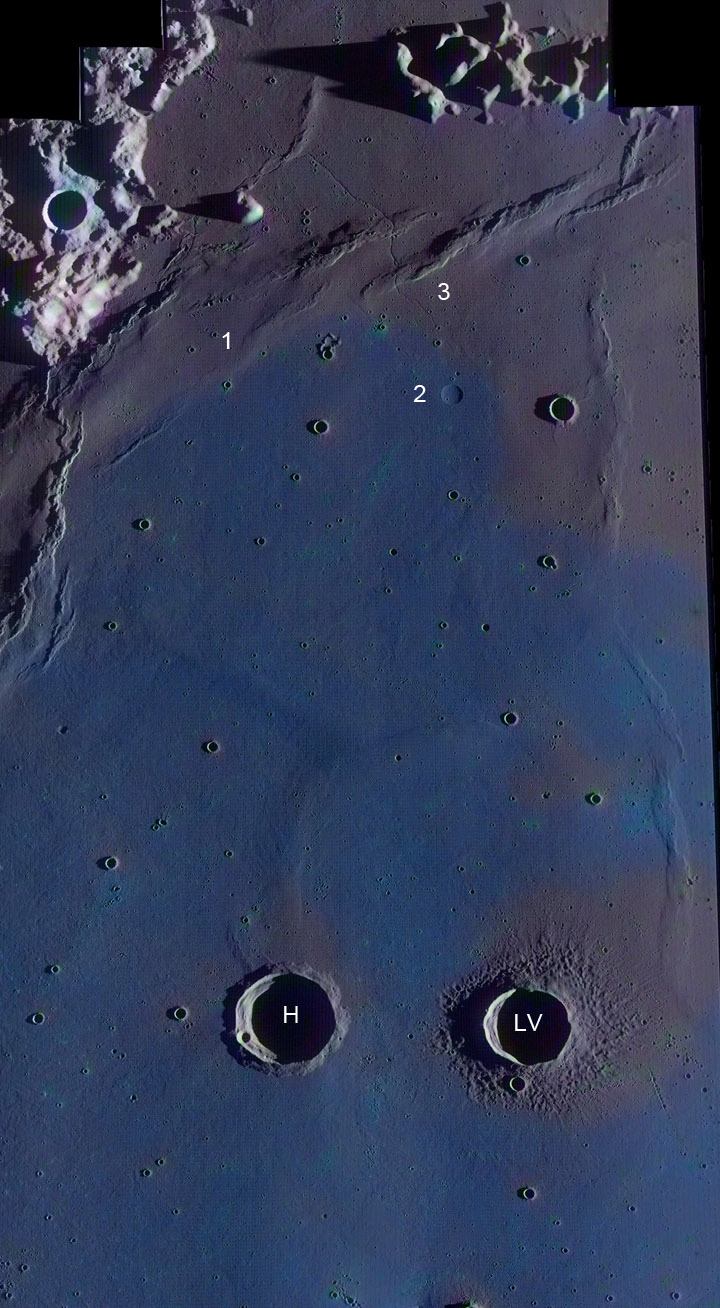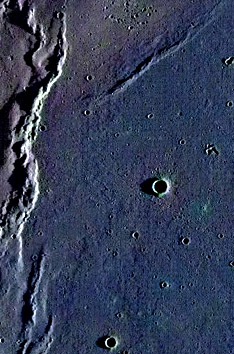Blue Lava

|
LRO mosaic created by and merged with the Minsk color image by Maurice Collins, New Zealand
I was wrong. In the June 23 LPOD I wrote that it was remarkable that the color boundaries on Mare Imbrium persist even though there is no morphological evidence for different lava flows. I had looked for differences in the flows on the LRO QuickMap but its high Sun angles made it difficult to see any small topographic features that might exist. By coincidence, Maurice then sent me an LRO mosaic he had assembled of the area around Helicon and Le Verrier craters in northwestern Imbrium, with Prom. Laplace at upper left. After only a few seconds looking at this lower Sun view I noticed that there was small scale roughness on some of the mare surfaces. Quickly comparing with the Minsk Miracle Imagers LPOD I realized that the rougher textured surface seemed to occur on the younger, blue flows. I asked Maurice to combine the Minsk color with the LRO mosaic and presto, today's LPOD resulted. Even at this reduced scale (65%) I think the rougher texture is visible in many places within the blue - the full resolution enhanced excerpt from the northwest corner shows a little better the rough blue surface. Lava flow surfaces are rough on the meters to perhaps ten meter scale, but micrometeorite bombardment smoothes out such rough surfaces as seen on the faintly red flows. Some interesting geologic relations are suggested by this image. At 1 the blue flows stop against the base of a mare ridge that rises about 160 m, a topographic barrier. The shallow, nearly rimless crater at 2 could be a volcanic collapse pit but the fact that it does have 25 m high rim suggests that it may be an impact crater formed on the red lavas and was nearly buried by the subsequent blue ones. The rille at 3 becomes narrower and shallower near the front of the blue flow - was part of it covered by the blue? Now look down at Helicon (H) and Le Verrier (LV). The latter is surrounded by a well preserved continuous ejecta blanket; H isn't. The blue lavas covered at least some of H's nearby ejecta (and earlier red lavas may have too. The blue lavas also seem to embay and surround the western ejecta of LV, suggesting that the blue may have been emplaced after LV formed. But it isn't completely certain - LV ejecta may be on top of the blue meaning that the crater is younger than the latest lavas in this area. This is a nice example of how the Earth-based, amateur color image and the orbital black and white one each become more informative when considered with the other.
Chuck Wood

|
Related Links
Rükl plate 11
Yesterday's LPOD: The Evidence Piles Up
Tomorrow's LPOD: A Long Way From Home
Register, Log in,
and join in the comments.





